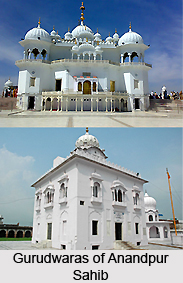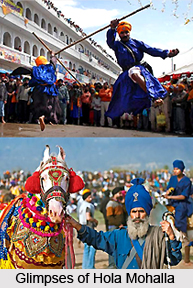 Anandpur Sahib also known as "the holy City of Bliss" is a small village situated in Punjab. This place is one of the most important sacred places of the Sikhs. It is surrounded by picturesque natural scenery and houses the impressive Gurudwara, which is one of the holiest Sikh shrines.
Anandpur Sahib also known as "the holy City of Bliss" is a small village situated in Punjab. This place is one of the most important sacred places of the Sikhs. It is surrounded by picturesque natural scenery and houses the impressive Gurudwara, which is one of the holiest Sikh shrines.
Location of Anandpur Sahib
Anandpur Sahib is located in Rupnagar district (Roper) in the Punjab state of India. It is situated on the lower spurs of the Himalayas. It lies towards Dharamsala and Manali and lies about 75 kms far from Chandigarh. Anandpur Sahib is framed between the Shivalik hills to the east and the Sutlej River further away in the west.
History of Anandpur Sahib
Anandpur Sahib was established in the year 1665. It was founded by the ninth Sikh Guru, Guru Tegh Bahadur. Here on the mound of Makhowal, Guru Tegh Bahadur raised a new surrounding and habitation. The ground was broken down in the year 1665, by Baba Gurditta Ji. The new village was named Chakk Nanaki after the Guru`s mother, Nanaki. This very village `Chakk Nanaki` eventually was named as Anandpur Sahib.
Demographics of Anandpur Sahib
According to 2001 India census, Anandpur Sahib had a population of 13,886. Of the total population, males and females constitutes 53% and 47% respectively. It has an average literacy rate of 73%, higher than the national average of 59.5%; with 77% of the males and 64% of females literate. 13% of the population is under 6 years of age.
 Religious Significance of Anandpur Sahib
Religious Significance of Anandpur Sahib
So far as the religious significance of Anandpur Sahib is concerned, it is second only to Amritsar, the city of Golden Temple. It houses a decent number of Gurudwaras which include Gurudwara Takht Sri Kesgarh Sahib, Gurudwara Sisganj Sahib, Gurdwara Guru Ka Mahal, Gurudwara Bhora Sahib, Gurudwara Thara Sahib, Gurudwara Akal Bunga Sahib, Gurudwara Damdama Sahib, Gurdwara Shaeedhi Bagh, Gurdwara Mata Jit Kaur, and Gurudwara Sri Hargobindsar Sahib to name a few.
The popular festival of Anandpur Sahib is Hola Mohalla which lasts for three days. Every year, the festival attracts up to 100,000 devotees from all over the country. On this occasion, the Gurudwaras are specially decorated. The attraction of the Hola Mohalla is a huge procession by the Nihangs.
Sacred sites near Anandpur Sahib include Guru-Ka-Lahore and Bhai Ghanaiya.
Connectivity of Anandpur Sahib
By Air: Nearest airport is at Chandigarh (75km away)
By Rail: Nearest railhead is at Nangal.
By Road: Taxis can be hired from Chandigarh.



















